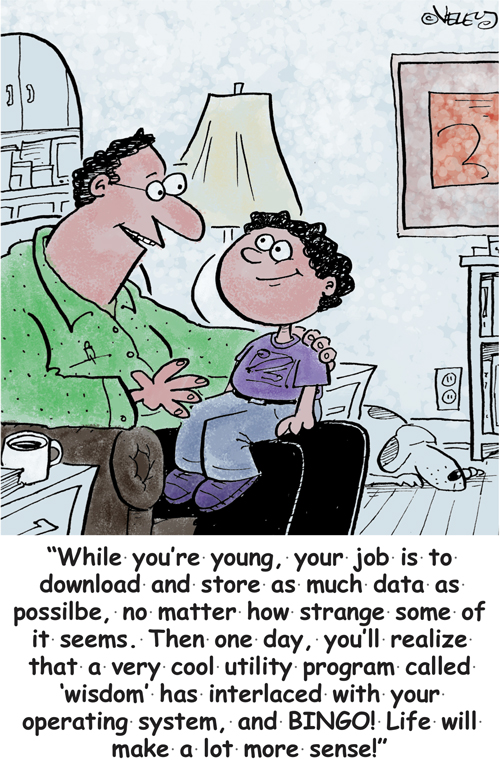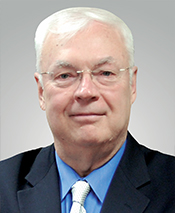The Discovery of ‘Dzubanium’
By Mark Dzuban
Some of my earliest experiences with unusual learning opportunities weren’t just out-of-the-box, they were out of this world! My father was a Westinghouse engineer who worked on the Apollo space program and on summer evenings when I was young he’d sit with me on the front steps — the “stoop” — and share tales that were based on science, if not always on fact.
Dad would weave stories of life on other planets, always careful to explain how the physical makeup of the individual planet would impact the physiology of the inhabitants. Because Jupiter’s gravitational pull is 2.36 times that of Earth, for example, inhabitants would be shorter and heavier with a heftier skeletal structure. We’d talk about interplanetary mineral exploration and how ores could be smelted and refined in space and shaped into airfoils to be sent to earth. And we’d talk about Dzubanium. More on that later.
When it came to learning, it turned out that Dad was ahead of his time. He understood the value of engaging the learner with anecdotes that would help transfer his trove of scientific knowledge to me. He understood how small infusions of information could provide an educational foundation that would last a lifetime. He understood how games — notes in “dits” and “dahs” when the family was learning Morse Code, for example — could drive learning and long-term retention.
Dad would have loved the insights of Dr. Karl Kapp elsewhere in these pages of Bloomsburg University. He’d have felt gratified in knowing how the concepts he used have been formalized as a scientific educational paradigm — evidence-based learning — that is helping organizations like SCTE•ISBE ensure that educational concepts take root and deliver real, long lasting results.
Dad taught me more than just science. He also taught me that learning comes in many shapes and sizes. Sure, there are those times when a single incident leaves a lesson permanently etched in our brain, but the reality is that most learning is the product of multiple flows of knowledge that often engage different senses.
When we began working with our operator partners to transform our learning and development capabilities a few years ago, our mandate was clear: We would take the best, most extensive and most dynamic catalogue of training for our industry — most of it developed in direct collaboration with operator partners — and integrate it into a new system built on a bedrock of learning science.
From that me tamorphosis has emerged a comprehensive program that is strengthening the workforce and building value for the industry. Our vice president of learning and development, Reni Gorman, has been reshaping our curricula to achieve lasting results, using expertise that won her awards with Fortune 500 companies. Our CORTEX Expert Development System™ and our CORTEX mobile app are supporting the integration of SCTE•ISBE educational programs into the roadmaps of our operator Corporate Alliance Partners and their workforces.
tamorphosis has emerged a comprehensive program that is strengthening the workforce and building value for the industry. Our vice president of learning and development, Reni Gorman, has been reshaping our curricula to achieve lasting results, using expertise that won her awards with Fortune 500 companies. Our CORTEX Expert Development System™ and our CORTEX mobile app are supporting the integration of SCTE•ISBE educational programs into the roadmaps of our operator Corporate Alliance Partners and their workforces.
Success is easy to find: Scores for our three bootcamps — DOCSIS 3.1, FTTX and wireless — ranged from 66 percent to 72 percent. Registration and attendance for our LiveLearning Webinars has been off the charts, with an average attendance rate of upwards of 50% of registrants. And interest from the operator community is growing rapidly.
As for Dzubanium, it was “discovered” when my father was working on backpack communications for the space program. While experimenting with a new sheet metal alloy as a lightweight, conductive platform, he found that gravitational properties would change based on the “Hall Effect” testing they conducted for electrical conductivity and magnetic properties. In the family lore, the “secret alloy” became Dzubanium — an “element” that could be lighter than hydrogen (in humor, we’d scotch tape Dzubanium to the left of H on the Periodic Table) or heavier than uranium based on the test setting.
On the stoop, Dad shared how the attraction-repulsion properties of Dzubanium and its ability to overcome friction and gravitational pull would make it ideal for propulsion and interplanetary travel — and Dzubanium ultimately became a memorable part of our chats. All these years later, I still treasure those evenings that were filled with everything I could want: father-son bonding, rich imagination and scientific learning.
 Mark L. Dzuban
Mark L. Dzuban
President/CEO, SCTE
As President and CEO of SCTE/ISBE, Mark Dzuban is continuing a lengthy career of telecommunications leadership. Mark has been instrumental in positioning SCTE/ISBE as a leader in energy management and technical education, driving creation of the Energy 2020 program, the CORTEX Expert Development System™ and other programs and services that build value for the cable system operators, technology partners and individual members. Mark was honored with the prestigious NCTA Vanguard Award in 2011.
Credit: Cartoonstock.com

